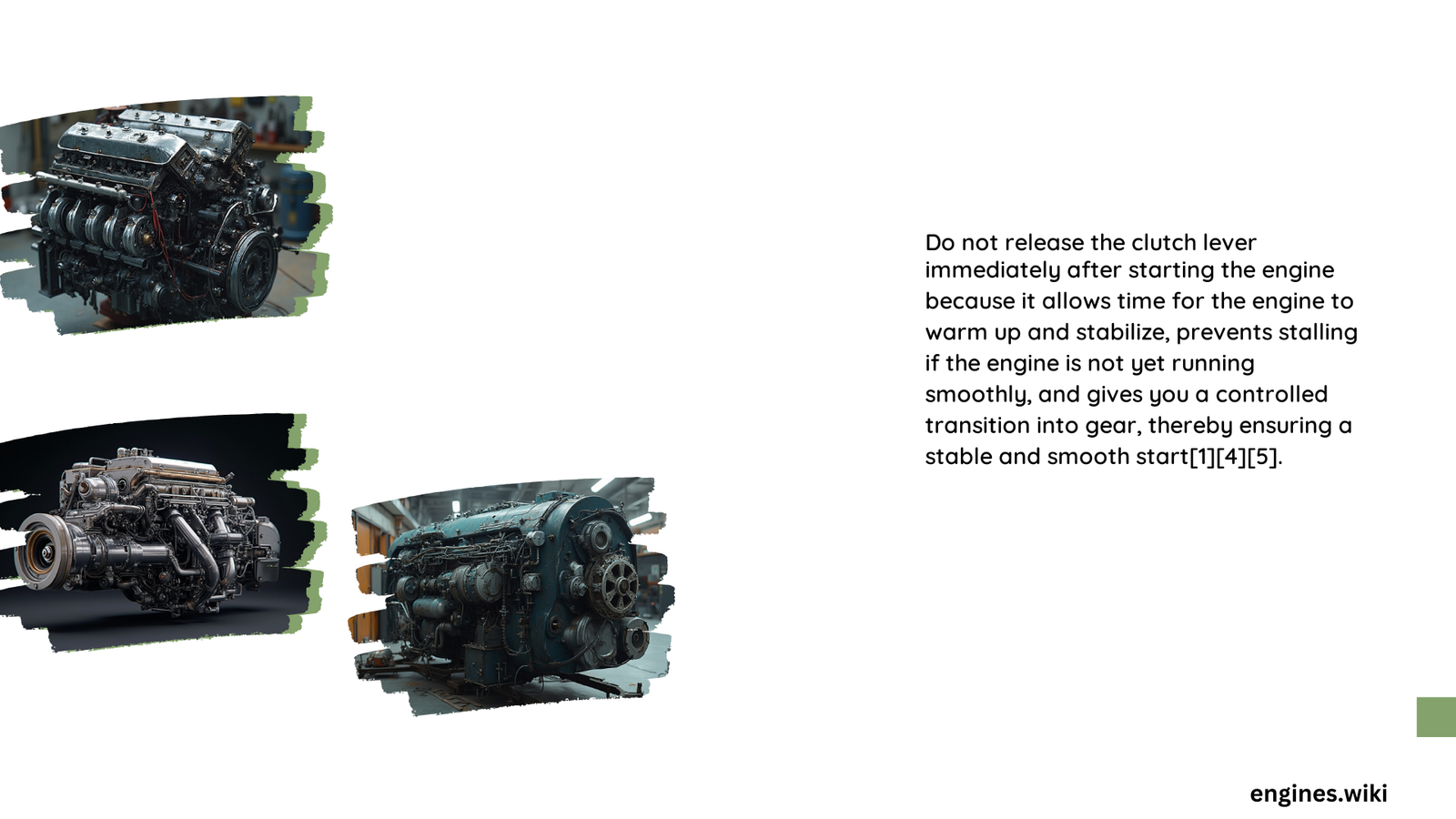Understanding the intricate mechanics of vehicle operation reveals critical insights into why operators must exercise caution when starting an engine. Releasing the clutch lever immediately after engine ignition can trigger a cascade of mechanical complications that compromise vehicle performance, accelerate component wear, and potentially lead to expensive repairs. This comprehensive guide explores the technical rationales behind maintaining clutch engagement during initial engine warm-up phases.
Why Should You Pause Before Releasing the Clutch?
What Happens During Immediate Clutch Release?
When an engine starts, multiple mechanical systems require synchronization and stabilization. Immediate clutch lever release can cause:
- Mechanical Stress: Sudden torque transmission before complete system equilibration
- Friction Component Wear: Premature clutch plate engagement
- Thermal Expansion Challenges: Uneven component temperature distribution
How Does Delayed Clutch Engagement Protect Vehicle Systems?
| System | Protection Mechanism | Potential Damage if Ignored |
|---|---|---|
| Transmission | Gradual load distribution | Accelerated wear, potential seal failure |
| Engine | Controlled thermal expansion | Increased friction, reduced lubrication efficiency |
| Clutch Mechanism | Controlled engagement | Premature plate degradation |
What Technical Factors Influence Clutch Engagement?
Temperature Dynamics
Cold ambient temperatures significantly impact mechanical system behaviors. Transmission fluid viscosity increases, requiring more time for proper circulation and lubrication. By maintaining clutch lever engagement, you allow:
- Gradual fluid warming
- Uniform thermal expansion
- Reduced mechanical stress on critical components
Lubrication Considerations
Engine oil requires approximately 2-5 minutes to reach optimal operating temperature and viscosity. During this period:
- Oil molecules become less viscous
- Lubrication effectiveness increases
- Internal component friction reduces
What Are the Long-Term Consequences of Improper Clutch Release?
Repeated immediate clutch releases can lead to:
- Accelerated Clutch Plate Wear: Up to 40% faster degradation
- Transmission System Stress: Increased internal component friction
- Reduced Mechanical Efficiency: Potential performance reduction
Expert Recommendations for Clutch Engagement
✅ Best Practices:
– Wait 30-60 seconds after engine start before releasing clutch
– Observe engine temperature indicators
– Maintain gentle, controlled clutch engagement
– Use smooth, progressive throttle application
Technical Precision in Vehicle Operation
Professional mechanics emphasize that vehicle systems require careful, calculated interactions. The moments immediately following engine start represent a critical window for mechanical system stabilization.
Conclusion

Understanding and implementing proper clutch engagement techniques represents a fundamental aspect of responsible vehicle maintenance. By respecting mechanical system requirements, operators can significantly extend vehicle longevity and maintain optimal performance.
